Grow Watermelons Successfully, even if you think you don’t have a green thumb! Have you ever dreamed of biting into a juicy, homegrown watermelon on a hot summer day? It’s a quintessential summer experience, and trust me, it’s more achievable than you might think. For centuries, watermelons have been cultivated, tracing back to ancient Africa, where they were prized not only for their refreshing taste but also for their ability to store water – a true survival tool!
But let’s be honest, the thought of grow watermelons successfully can be a little intimidating. Maybe you’ve tried before and ended up with tiny, bland fruits, or perhaps you’re just not sure where to start. That’s where this DIY guide comes in! I’m going to share some simple yet effective tricks and hacks that will dramatically increase your chances of a bountiful watermelon harvest, even in a small garden or container.
Why do you need these DIY tricks? Because store-bought watermelons simply can’t compare to the flavor and satisfaction of growing your own. Plus, knowing exactly what goes into your food is a huge peace of mind. So, get ready to roll up your sleeves, because we’re about to unlock the secrets to growing the sweetest, most delicious watermelons you’ve ever tasted!
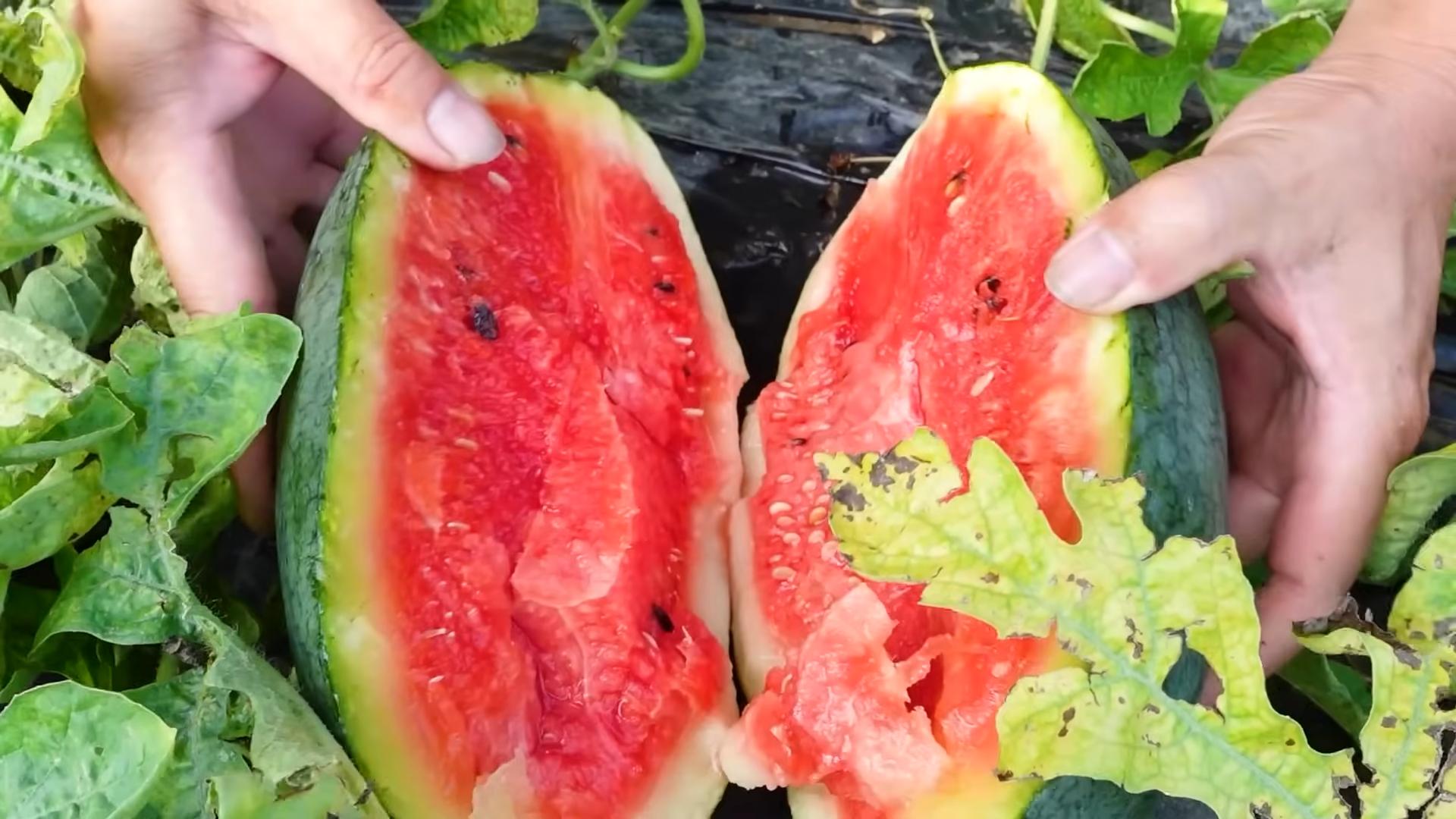
Growing Watermelons: A Comprehensive DIY Guide for a Sweet Harvest
Hey there, fellow gardening enthusiasts! I’m so excited to share my tried-and-true method for growing juicy, delicious watermelons right in your own backyard. It might seem daunting, but trust me, with a little planning and effort, you can be enjoying homegrown watermelon all summer long. Let’s dive in!
Choosing the Right Watermelon Variety
Before we even think about planting, it’s crucial to pick the right watermelon variety for your climate and garden size. Some varieties are better suited for shorter growing seasons, while others need ample space to sprawl. Here’s a quick rundown of some popular choices:
* **Sugar Baby:** A classic, compact variety perfect for smaller gardens. It matures quickly, producing small, sweet watermelons.
* **Crimson Sweet:** A widely popular, reliable variety known for its large size and excellent flavor. It needs a longer growing season.
* **Jubilee:** Another large variety with a distinctive striped rind. It’s disease-resistant and produces flavorful watermelons.
* **Yellow Doll:** A unique variety with yellow flesh that’s incredibly sweet. It’s a good choice for those looking for something different.
* **Bush Sugar Baby:** A compact bush variety, ideal for container gardening or small spaces.
Consider your local climate and the amount of space you have available when making your selection. Check with your local nursery for recommendations specific to your area.
Preparing Your Garden Bed
Watermelons are heavy feeders, meaning they need nutrient-rich soil to thrive. Proper soil preparation is key to a successful harvest.
* **Sunlight:** Watermelons need at least 6-8 hours of direct sunlight per day. Choose a location that receives plenty of sun.
* **Soil:** Watermelons prefer well-drained, sandy loam soil with a pH between 6.0 and 6.8.
* **Soil Testing:** It’s always a good idea to test your soil before planting. This will help you determine if any amendments are needed. You can purchase a soil testing kit at most garden centers or send a sample to your local agricultural extension office.
* **Amendments:** Based on your soil test results, amend your soil with compost, well-rotted manure, or other organic matter to improve drainage and fertility. I personally love using composted chicken manure – it works wonders!
* **Raised Beds (Optional):** If you have heavy clay soil, consider growing your watermelons in raised beds. This will improve drainage and prevent root rot.
Starting Watermelon Seeds (Indoors or Direct Sowing)
You have two options for starting your watermelon seeds: indoors or direct sowing. Starting seeds indoors gives you a head start, especially in areas with short growing seasons.
Starting Seeds Indoors:
1. **Timing:** Start your seeds indoors about 4-6 weeks before the last expected frost.
2. **Containers:** Use peat pots or biodegradable containers to avoid disturbing the roots when transplanting.
3. **Soil:** Fill the containers with a seed-starting mix.
4. **Planting:** Plant 2-3 seeds per container, about 1 inch deep.
5. **Watering:** Water gently to moisten the soil.
6. **Warmth:** Keep the containers in a warm location (around 80-85°F) until the seeds germinate. A heat mat can be helpful.
7. **Light:** Once the seeds germinate, move the containers to a sunny window or under grow lights.
8. **Thinning:** Once the seedlings have developed a few true leaves, thin them to one plant per container.
9. **Hardening Off:** Before transplanting, gradually acclimate the seedlings to outdoor conditions by placing them outside for a few hours each day, increasing the time gradually over a week. This process is called “hardening off.”
Direct Sowing:
1. **Timing:** Direct sow your seeds after the last expected frost, when the soil temperature has warmed to at least 70°F.
2. **Planting:** Plant 4-6 seeds per hill, about 1 inch deep.
3. **Spacing:** Space the hills 3-4 feet apart.
4. **Watering:** Water gently to moisten the soil.
5. **Thinning:** Once the seedlings have developed a few true leaves, thin them to the strongest one or two plants per hill.
Transplanting Watermelon Seedlings
If you started your seeds indoors, it’s time to transplant them into your garden.
1. **Timing:** Transplant your seedlings after the last expected frost, when the soil temperature has warmed to at least 70°F.
2. **Preparation:** Dig a hole that is slightly larger than the root ball of the seedling.
3. **Planting:** Gently remove the seedling from the container and place it in the hole. If you used peat pots, you can plant the entire pot.
4. **Spacing:** Space the seedlings 3-4 feet apart.
5. **Watering:** Water thoroughly after transplanting.
6. **Mulching:** Apply a layer of mulch around the plants to help retain moisture and suppress weeds. I like to use straw or shredded leaves.
Watering and Fertilizing
Watermelons need consistent watering, especially during fruit development.
* **Watering:** Water deeply and regularly, especially during hot, dry weather. Aim for about 1-2 inches of water per week. Avoid overhead watering, as this can promote fungal diseases. Drip irrigation or soaker hoses are ideal.
* **Fertilizing:** Fertilize your watermelons every 2-3 weeks with a balanced fertilizer. Look for a fertilizer with a higher phosphorus content to promote fruit development. I like to use a liquid fertilizer diluted according to the package instructions. You can also side-dress with compost or well-rotted manure.
Pollination
Watermelons need to be pollinated in order to produce fruit. They rely on bees and other pollinators to transfer pollen from the male flowers to the female flowers.
* **Attracting Pollinators:** Plant flowers that attract pollinators near your watermelon patch. Some good choices include sunflowers, zinnias, and lavender.
* **Hand Pollination (If Necessary):** If you’re not seeing a lot of bee activity, you may need to hand-pollinate your watermelons. To do this, use a small paintbrush to transfer pollen from the male flowers to the female flowers. You can identify female flowers by the small, immature watermelon at the base of the flower.
Pest and Disease Control
Watermelons can be susceptible to various pests and diseases.
* **Common Pests:** Aphids, squash bugs, cucumber beetles, and vine borers are common watermelon pests.
* **Common Diseases:** Powdery mildew, fusarium wilt, and anthracnose are common watermelon diseases.
* **Prevention:** Practice good garden hygiene to prevent pest and disease problems. Remove weeds and debris regularly.
* **Control:** If you encounter pests or diseases, use organic pest control methods or fungicides as needed. Neem oil is a good option for controlling many common pests.
Supporting the Fruit
As your watermelons grow, they may need some support to prevent them from rotting on the ground.
* **Mulch:** A thick layer of mulch can help keep the fruit off the soil.
* **Boards or Bricks:** Place boards or bricks under the watermelons to elevate them.
* **Slings:** For larger varieties, you may need to create slings to support the fruit. You can use old pantyhose or fabric scraps to make slings.
Harvesting Your Watermelons
Knowing when to harvest your watermelons is crucial for getting the best flavor.
* **Days to Maturity:** Check the seed packet for the days to maturity for your chosen variety.
* **Tendril:** The tendril closest to the watermelon should be brown and dry.
* **Ground Spot:** The ground spot (the area where the watermelon rests on the ground) should be yellow or cream-colored.
* **Thumping:** Thump the watermelon. A ripe watermelon will sound hollow.
* **Rind:** The rind should be dull and waxy, not shiny.
Don’t be afraid to experiment! It takes a little practice to get the hang of it, but once you’ve harvested a few watermelons, you’ll get a feel for when they’re ripe.
Enjoying Your Harvest
Congratulations! You’ve successfully grown your own watermelons. Now it’s time to enjoy the fruits (or rather, the watermelons) of your labor.
* **Storage:** Store your watermelons in a cool, dry place.
* **Serving:** Serve your watermelons chilled.
Hey there, fellow gardening enthusiasts! I’m so excited to share my tried-and-true method for growing juicy, delicious watermelons right in your own backyard. It might seem daunting, but trust me, with a little planning and effort, you can be enjoying homegrown watermelon all summer long. Let’s dive in!
Choosing the Right Watermelon Variety
Before we even think about planting, it’s crucial to pick the right watermelon variety for your climate and garden size. Some varieties are better suited for shorter growing seasons, while others need ample space to sprawl. Here’s a quick rundown of some popular choices:
* **Sugar Baby:** A classic, compact variety perfect for smaller gardens. It matures quickly, producing small, sweet watermelons.
* **Crimson Sweet:** A widely popular, reliable variety known for its large size and excellent flavor. It needs a longer growing season.
* **Jubilee:** Another large variety with a distinctive striped rind. It’s disease-resistant and produces flavorful watermelons.
* **Yellow Doll:** A unique variety with yellow flesh that’s incredibly sweet. It’s a good choice for those looking for something different.
* **Bush Sugar Baby:** A compact bush variety, ideal for container gardening or small spaces.
Consider your local climate and the amount of space you have available when making your selection. Check with your local nursery for recommendations specific to your area.
Preparing Your Garden Bed
Watermelons are heavy feeders, meaning they need nutrient-rich soil to thrive. Proper soil preparation is key to a successful harvest.
* **Sunlight:** Watermelons need at least 6-8 hours of direct sunlight per day. Choose a location that receives plenty of sun.
* **Soil:** Watermelons prefer well-drained, sandy loam soil with a pH between 6.0 and 6.8.
* **Soil Testing:** It’s always a good idea to test your soil before planting. This will help you determine if any amendments are needed. You can purchase a soil testing kit at most garden centers or send a sample to your local agricultural extension office.
* **Amendments:** Based on your soil test results, amend your soil with compost, well-rotted manure, or other organic matter to improve drainage and fertility. I personally love using composted chicken manure – it works wonders!
* **Raised Beds (Optional):** If you have heavy clay soil, consider growing your watermelons in raised beds. This will improve drainage and prevent root rot.
Starting Watermelon Seeds (Indoors or Direct Sowing)
You have two options for starting your watermelon seeds: indoors or direct sowing. Starting seeds indoors gives you a head start, especially in areas with short growing seasons.
Starting Seeds Indoors:
1. **Timing:** Start your seeds indoors about 4-6 weeks before the last expected frost.
2. **Containers:** Use peat pots or biodegradable containers to avoid disturbing the roots when transplanting.
3. **Soil:** Fill the containers with a seed-starting mix.
4. **Planting:** Plant 2-3 seeds per container, about 1 inch deep.
5. **Watering:** Water gently to moisten the soil.
6. **Warmth:** Keep the containers in a warm location (around 80-85°F) until the seeds germinate. A heat mat can be helpful.
7. **Light:** Once the seeds germinate, move the containers to a sunny window or under grow lights.
8. **Thinning:** Once the seedlings have developed a few true leaves, thin them to one plant per container.
9. **Hardening Off:** Before transplanting, gradually acclimate the seedlings to outdoor conditions by placing them outside for a few hours each day, increasing the time gradually over a week. This process is called “hardening off.”
Direct Sowing:
1. **Timing:** Direct sow your seeds after the last expected frost, when the soil temperature has warmed to at least 70°F.
2. **Planting:** Plant 4-6 seeds per hill, about 1 inch deep.
3. **Spacing:** Space the hills 3-4 feet apart.
4. **Watering:** Water gently to moisten the soil.
5. **Thinning:** Once the seedlings have developed a few true leaves, thin them to the strongest one or two plants per hill.
Transplanting Watermelon Seedlings
If you started your seeds indoors, it’s time to transplant them into your garden.
1. **Timing:** Transplant your seedlings after the last expected frost, when the soil temperature has warmed to at least 70°F.
2. **Preparation:** Dig a hole that is slightly larger than the root ball of the seedling.
3. **Planting:** Gently remove the seedling from the container and place it in the hole. If you used peat pots, you can plant the entire pot.
4. **Spacing:** Space the seedlings 3-4 feet apart.
5. **Watering:** Water thoroughly after transplanting.
6. **Mulching:** Apply a layer of mulch around the plants to help retain moisture and suppress weeds. I like to use straw or shredded leaves.
Watering and Fertilizing
Watermelons need consistent watering, especially during fruit development.
* **Watering:** Water deeply and regularly, especially during hot, dry weather. Aim for about 1-2 inches of water per week. Avoid overhead watering, as this can promote fungal diseases. Drip irrigation or soaker hoses are ideal.
* **Fertilizing:** Fertilize your watermelons every 2-3 weeks with a balanced fertilizer. Look for a fertilizer with a higher phosphorus content to promote fruit development. I like to use a liquid fertilizer diluted according to the package instructions. You can also side-dress with compost or well-rotted manure.
Pollination
Watermelons need to be pollinated in order to produce fruit. They rely on bees and other pollinators to transfer pollen from the male flowers to the female flowers.
* **Attracting Pollinators:** Plant flowers that attract pollinators near your watermelon patch. Some good choices include sunflowers, zinnias, and lavender.
* **Hand Pollination (If Necessary):** If you’re not seeing a lot of bee activity, you may need to hand-pollinate your watermelons. To do this, use a small paintbrush to transfer pollen from the male flowers to the female flowers. You can identify female flowers by the small, immature watermelon at the base of the flower.
Pest and Disease Control
Watermelons can be susceptible to various pests and diseases.
* **Common Pests:** Aphids, squash bugs, cucumber beetles, and vine borers are common watermelon pests.
* **Common Diseases:** Powdery mildew, fusarium wilt, and anthracnose are common watermelon diseases.
* **Prevention:** Practice good garden hygiene to prevent pest and disease problems. Remove weeds and debris regularly.
* **Control:** If you encounter pests or diseases, use organic pest control methods or fungicides as needed. Neem oil is a good option for controlling many common pests.
Supporting the Fruit
As your watermelons grow, they may need some support to prevent them from rotting on the ground.
* **Mulch:** A thick layer of mulch can help keep the fruit off the soil.
* **Boards or Bricks:** Place boards or bricks under the watermelons to elevate them.
* **Slings:** For larger varieties, you may need to create slings to support the fruit. You can use old pantyhose or fabric scraps to make slings.
Harvesting Your Watermelons
Knowing when to harvest your watermelons is crucial for getting the best flavor.
* **Days to Maturity:** Check the seed packet for the days to maturity for your chosen variety.
* **Tendril:** The tendril closest to the watermelon should be brown and dry.
* **Ground Spot:** The ground spot (the area where the watermelon rests on the ground) should be yellow or cream-colored.
* **Thumping:** Thump the watermelon. A ripe watermelon will sound hollow.
* **Rind:** The rind should be dull and waxy, not shiny.
Don’t be afraid to experiment! It takes a little practice to get the hang of it, but once you’ve harvested a few watermelons, you’ll get a feel for when they’re ripe.
Enjoying Your Harvest
Congratulations! You’ve successfully grown your own watermelons. Now it’s time to enjoy the fruits (or rather, the watermelons) of your labor.
* **Storage:** Store your watermelons in a cool, dry place.
* **Serving:** Serve your watermelons chilled.
* **Recipes:** Get creative with your watermelon! You can eat it plain, add it to salads, make watermelon juice, or even grill it.
Growing watermelons can be a rewarding experience. With a little patience and effort, you can enjoy delicious, homegrown watermelons all summer long
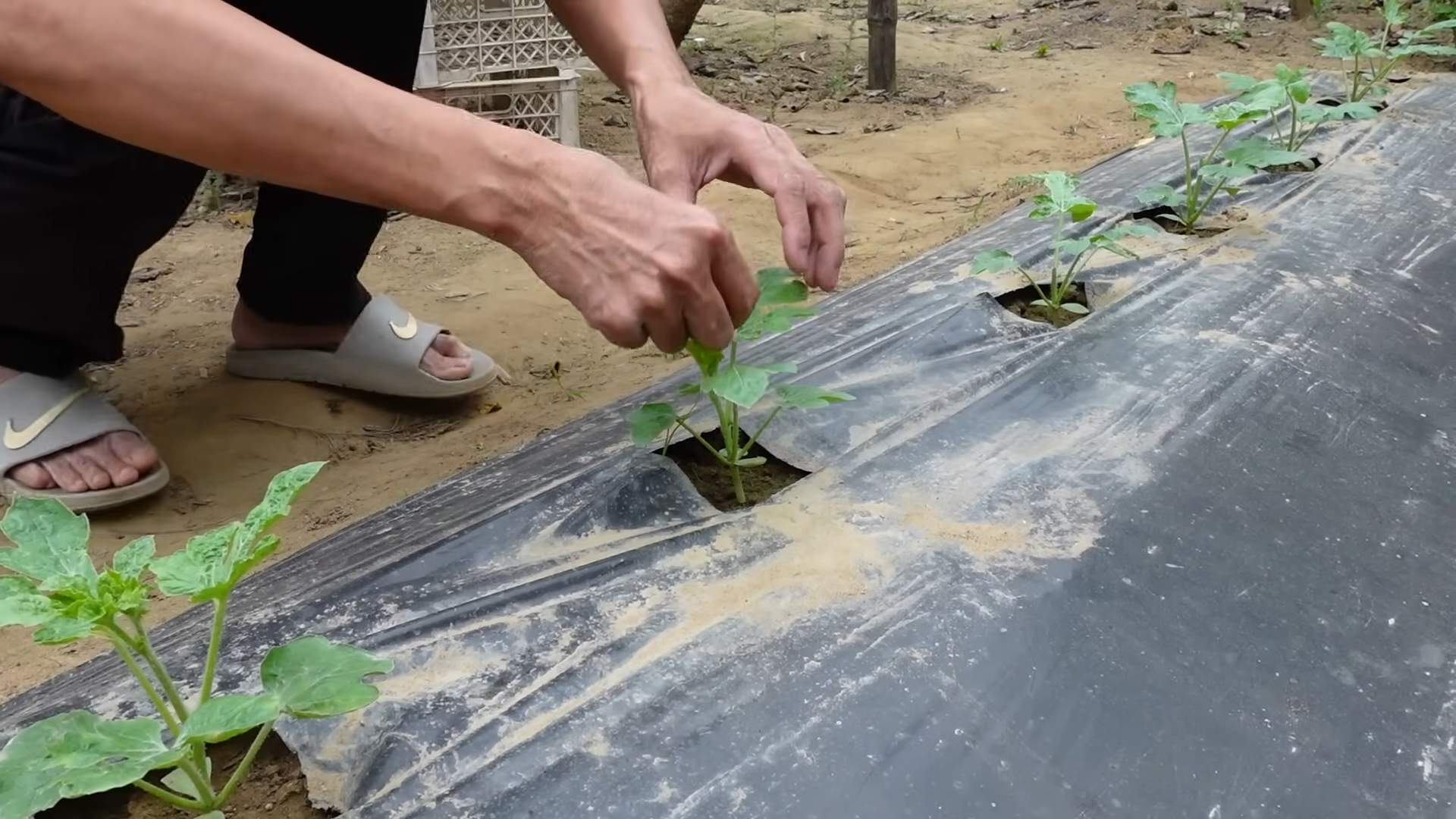
Conclusion
So, there you have it! Growing watermelons successfully doesn’t have to be a daunting task reserved for seasoned gardeners. By implementing these simple yet effective DIY tricks, you can transform your backyard into a watermelon wonderland. We’ve covered everything from selecting the right variety for your climate and space to nurturing your plants with proper watering and fertilization techniques. Remember, the key is patience, observation, and a little bit of love.
But why is this DIY approach a must-try? Because it empowers you to take control of your food source, connect with nature, and experience the unparalleled satisfaction of harvesting your own juicy, sweet watermelons. Store-bought watermelons simply can’t compare to the flavor and freshness of homegrown ones. Plus, you’ll know exactly what went into growing them, avoiding any unwanted chemicals or pesticides.
Don’t be afraid to experiment with different varieties of watermelons. Consider trying a smaller, bush-type watermelon if you have limited space, or a yellow-fleshed variety for a unique flavor profile. You can also explore different trellising methods to maximize space and improve air circulation around your plants. Another variation to consider is companion planting. Marigolds, for example, can help deter pests, while basil can improve the overall health of your watermelon plants.
We understand that every garden is unique, and what works for one person might not work for another. That’s why we encourage you to adapt these techniques to your specific needs and environment. Observe your plants closely, pay attention to their signals, and don’t be afraid to adjust your approach as needed.
Ultimately, the success of your watermelon growing endeavor depends on your willingness to learn, experiment, and persevere. So, grab your gardening gloves, gather your supplies, and get ready to embark on a rewarding journey. We’re confident that with a little effort and these DIY tricks, you’ll be enjoying delicious, homegrown watermelons in no time.
We are incredibly excited for you to try these methods for growing watermelons successfully. We are even more excited to hear about your experiences! Share your successes, your challenges, and any tips you’ve discovered along the way in the comments section below. Let’s create a community of watermelon enthusiasts and learn from each other. Happy gardening!
Frequently Asked Questions (FAQ)
Q: What is the best time to start growing watermelons?
A: The best time to start growing watermelons depends on your climate. Watermelons are warm-season crops and require a long growing season of at least 70-90 days. In general, you should start seeds indoors 6-8 weeks before the last expected frost. If you live in a warmer climate with a longer growing season, you can direct sow seeds outdoors after the soil has warmed up to at least 70°F (21°C). Make sure to check your local frost dates to determine the optimal planting time for your region.
Q: What kind of soil is best for growing watermelons?
A: Watermelons thrive in well-drained, sandy loam soil that is rich in organic matter. The soil should have a pH between 6.0 and 6.8. Before planting, amend your soil with compost or well-rotted manure to improve its fertility and drainage. Avoid heavy clay soils, as they can retain too much moisture and lead to root rot. If you have clay soil, consider growing your watermelons in raised beds or containers.
Q: How much sunlight do watermelons need?
A: Watermelons need at least 6-8 hours of direct sunlight per day to thrive. Choose a planting location that receives full sun throughout the day. Insufficient sunlight can result in poor fruit production and smaller, less flavorful watermelons.
Q: How often should I water my watermelon plants?
A: Watermelons need consistent moisture, especially during fruit development. Water deeply and regularly, aiming to keep the soil consistently moist but not waterlogged. Water at the base of the plants to avoid wetting the foliage, which can increase the risk of fungal diseases. During hot, dry weather, you may need to water your watermelon plants daily. As the fruits ripen, you can reduce watering slightly to improve their sweetness.
Q: What are some common pests and diseases that affect watermelons?
A: Common pests that affect watermelons include aphids, squash bugs, cucumber beetles, and vine borers. Diseases that can affect watermelons include powdery mildew, fusarium wilt, and anthracnose. Regularly inspect your plants for signs of pests or diseases and take appropriate action. You can use organic pest control methods, such as insecticidal soap or neem oil, to control pests. To prevent diseases, ensure good air circulation around your plants, avoid overhead watering, and practice crop rotation.
Q: How do I know when my watermelon is ripe?
A: Determining when a watermelon is ripe can be tricky, but there are a few telltale signs to look for. First, check the tendril closest to the fruit stem. When this tendril turns brown and dries up, it’s a good indication that the watermelon is ripe. Second, look at the spot where the watermelon rests on the ground. This spot should be yellow or cream-colored, not white or green. Finally, give the watermelon a gentle thump. A ripe watermelon will sound hollow and deep.
Q: Can I grow watermelons in containers?
A: Yes, you can grow watermelons in containers, but you’ll need to choose a large container (at least 20 gallons) and select a bush-type or dwarf watermelon variety. Make sure the container has drainage holes and use a high-quality potting mix. Water container-grown watermelons regularly and fertilize them every 2-3 weeks with a balanced fertilizer. You may also need to provide support for the vines as they grow.
Q: How can I improve the sweetness of my watermelons?
A: Several factors can influence the sweetness of your watermelons. First, choose a variety that is known for its sweetness. Second, ensure that your plants receive plenty of sunlight and water. Third, fertilize your plants with a fertilizer that is high in potassium, which is essential for fruit development and sweetness. Finally, reduce watering slightly as the fruits ripen to concentrate their sugars.
Q: What are some good companion plants for watermelons?
A: Good companion plants for watermelons include marigolds, basil, nasturtiums, and radishes. Marigolds help deter pests, while basil can improve the overall health of your watermelon plants. Nasturtiums attract beneficial insects, and radishes can help break up the soil and improve drainage. Avoid planting watermelons near potatoes or tomatoes, as they can compete for nutrients.
Q: How do I save watermelon seeds for next year?
A: To save watermelon seeds, scoop out the seeds from a ripe watermelon and rinse them thoroughly to remove any pulp. Spread the seeds out on a paper towel and let them dry completely for several days. Once the seeds are dry, store them in an airtight container in a cool, dark, and dry place. Watermelon seeds can remain viable for several years if stored properly.

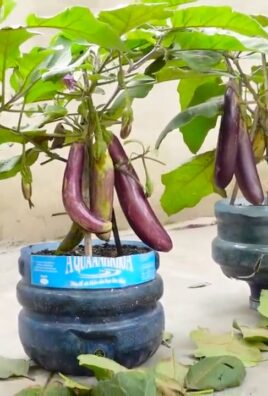
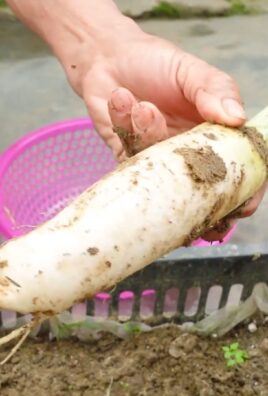
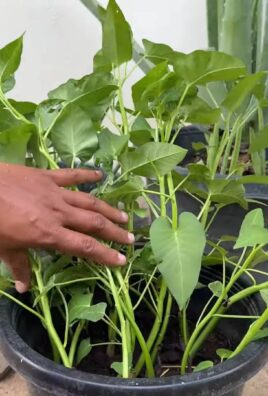
Leave a Comment